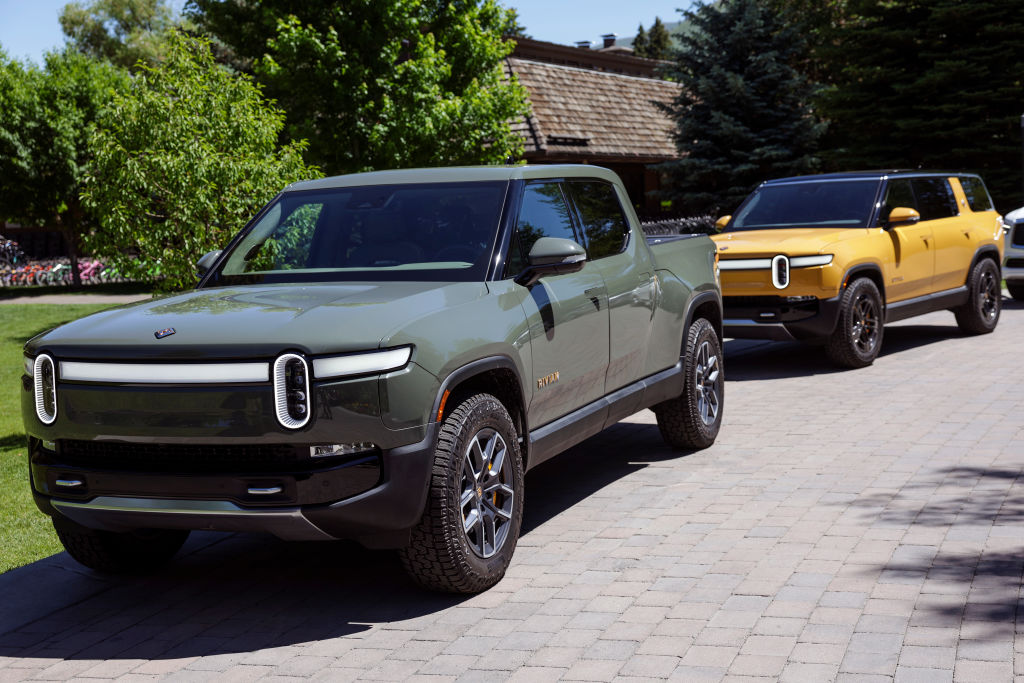Even a small bump on an electric vehicle can mean big money in repairs, as one Rivian owner has discovered.
In May, Rivian R1T owner Chris Apfelstadt went public with the cost of a February accident in which his truck was rear-ended. The bottom line was an eye-popping $42,000, according to the auto news website The Drive.
“I expected it to be expensive, but it was still a shocking number,” Apfelstadt said, according to The New York Times.
Between the cost of the repair and the rental car Apfelstadt used in the interim, the whole venture came “very close to maxing out the other driver’s $50,000 insurance payout limit,” The Drive reported.
The Times report said huge repair bill for electric vehicles is a reason that the average cost of fixing a vehicle — gas- or electric-powered — has risen 36 percent since 2018, which has contributed to the 17 percent hike in insurance premiums in the 12 months that ended in May.
The Times summed up the repair world by writing that vehicles, including many electric ones on the market, “have become so complex and luxurious that seemingly simple repairs can cost a small fortune.
“The modern digital architecture is so advanced that systems beyond point of impact are being disrupted,” Ryan Mandell, director of claims performance for Mitchell, a company that provides information to insurance companies and auto repair businesses, told the Times.
“Getting a car back to pre-loss condition is harder than at any point in history, and will only become more challenging,” he said.
The Times reports said Rivian, the maker of Apfelstadt’s vehicle, has a limited repair network of about 200 shops, unlike Ford’s 2,800 dealers.
Data provided by Mitchell indicated that the average repair bill for an electric vehicle last year was about $6,800. That’s about $2,400 more than the overall vehicle average
The Times report said Teslas, which sell for between $40,000 and $110,000, are about 75 percent of the EV-related collision claims.
Damage to an EV’s battery pack is a daunting challenge, according to Sandy Munro, an engineer and consultant who hosts a YouTube show, who was interviewed by the Times.
“Right now, if there’s serious damage to the pack, nobody is anxious to take a shot at repairing that,” he told the newspaper.
Apfelstadt told The Drive that the construction of his vehicle was one reason a fix initially estimated to be under $2,000 evolved into a monster bill.
“The biggest story here is that what appears to be a minor accident on the surface can be much more costly to fix. The truck is designed [to] absorb the impact to limit injuries to the driver and passengers. So in the event of a collision, they need to inspect a lot of parts to make sure they were not damaged,” he said.
“The back quarter panel was damaged and that piece goes all the way from the tailgate to the front windshield,” Apfelstadt said.
After looking into the matter closely for an article on the automotive-culture website The Autopian, website co-founder Jason Torchinsky wrote that Apelstadt was not quite right on some details, but found out the repairs did involve “a process that proved to be incredibly, even shockingly, complex.”
He noted that “by the time all of that is done, an awful lot of that truck has been disassembled. And that’s not even addressing the new bumper or the brackets behind the bumper and the rear under-bumper sill panel, which, in this case, did sustain some damage, and had to be replaced, also a non-trivial job because they’re riveted and bonded into place,” citing information from the shop that made the repairs.
“In short, the cascade effect that starts with needing to paint a new tailgate to the color-matching quality demanded turned into a process that took apart half a very complex pickup truck,” he wrote.
This article appeared originally on The Western Journal.

























 Continue with Google
Continue with Google